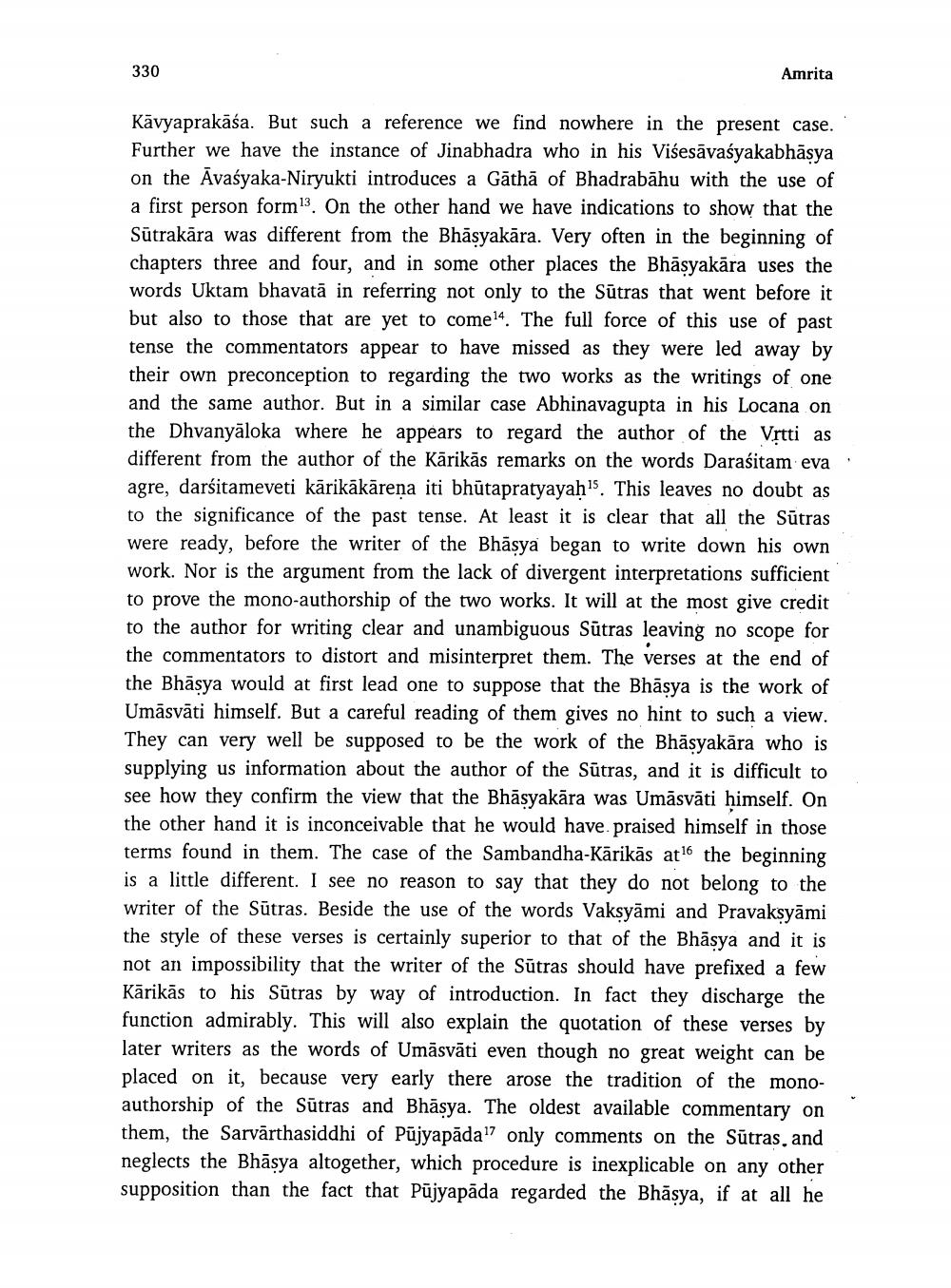________________
330
Amrita
Kavyaprakāśa. But such a reference we find nowhere in the present case. Further we have the instance of Jinabhadra who in his Viśesävaśyakabhāṣya on the Avaśyaka-Niryukti introduces a Gāthā of Bhadrabahu with the use of a first person form. On the other hand we have indications to show that the Sūtrakära was different from the Bhāṣyakāra. Very often in the beginning of chapters three and four, and in some other places the Bhāṣyakära uses the words Uktam bhavată in referring not only to the Sütras that went before it but also to those that are yet to come1. The full force of this use of past tense the commentators appear to have missed as they were led away by their own preconception to regarding the two works as the writings of one and the same author. But in a similar case Abhinavagupta in his Locana on the Dhvanyaloka where he appears to regard the author of the Vṛtti as different from the author of the Kärikäs remarks on the words Daraśitam eva agre, darśitameveti kārikākāreņa iti bhütapratyayah's. This leaves no doubt as to the significance of the past tense. At least it is clear that all the Sutras were ready, before the writer of the Bhasya began to write down his own work. Nor is the argument from the lack of divergent interpretations sufficient to prove the mono-authorship of the two works. It will at the most give credit to the author for writing clear and unambiguous Sutras leaving no scope for the commentators to distort and misinterpret them. The verses at the end of the Bhāṣya would at first lead one to suppose that the Bhāṣya is the work of Umāsväti himself. But a careful reading of them gives no hint to such a view. They can very well be supposed to be the work of the Bhäsyakära who is supplying us information about the author of the Sutras, and it is difficult to see how they confirm the view that the Bhäsyakāra was Umäsväti himself. On the other hand it is inconceivable that he would have praised himself in those terms found in them. The case of the Sambandha-Kärikäs at the beginning is a little different. I see no reason to say that they do not belong to the writer of the Sutras. Beside the use of the words Vakṣyāmi and Pravakṣyāmi the style of these verses is certainly superior to that of the Bhāṣya and it is not an impossibility that the writer of the Sūtras should have prefixed a few Kärikäs to his Sutras by way of introduction. In fact they discharge the function admirably. This will also explain the quotation of these verses by later writers as the words of Umäsväti even though no great weight can be placed on it, because very early there arose the tradition of the monoauthorship of the Sütras and Bhāṣya. The oldest available commentary on them, the Sarvärthasiddhi of Pujyapada" only comments on the Sūtras, and neglects the Bhāṣya altogether, which procedure is inexplicable on any other supposition than the fact that Pujyapada regarded the Bhāṣya, if at all he




